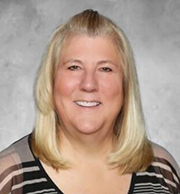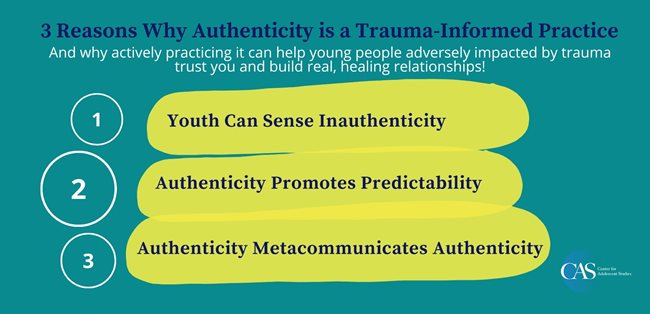
The Basics of Being a Trauma-Informed School Counselor
By Cindy Povall | March 2022
 In all that school counselors do to support their counselees, traits and skills learned early in the school counseling education are best in helping the trauma-exposed student, and all students. The three highlighted in this article include authenticity, meeting basic needs of our students and using regulation skills.
In all that school counselors do to support their counselees, traits and skills learned early in the school counseling education are best in helping the trauma-exposed student, and all students. The three highlighted in this article include authenticity, meeting basic needs of our students and using regulation skills.A nascent school counseling student is taught the humanistic counseling theory of American psychologist Carl Rogers. His theory states that authenticity is critical in a successful counseling relationship. This graphic from the Center for Adolescent Studies (2022) shares three reasons why authenticity is a trauma-informed practice.

School counseling students also learn that Rogers' theories were influenced by another American psychologist, Abraham Maslow. Maslow believed that human basic needs must be met before a person can be self-actualized. Tammy Schamuhn, co-founder of the Institute for Child Psychology, states that Maslow’s Hierarchy of Needs is an evidence-based modality when working with children who have experienced trauma. In working with students who have been exposed to trauma, school counselors must pay attention to the first two needs before proceeding with anything else. They are:
- the physiological needs of food, water, warmth and rest
- safety needs or the felt sense of security and safety
Meeting their basic needs, “Maslow before Bloom,” is critical in counseling as it is in learning. It is important to provide our students with the essential human needs before delving into a counseling session. The consistency of meeting these needs allows students to realize that they can trust and find counseling support whenever dysregulated.
School counselors are skilled at emotional regulation. Before we use these skills with our counselee, we must regulate our own emotions in order to co-regulate. For emotional regulation I use a variety of resources. These resources include ready-to-go grounding technique activities like 5-4-3-2-1 grounding, mindfulness activities like breathing techniques, or other activities such as coloring, journaling, play dough, stress balls, glitter jars or small smooth stones. You may also find the lights low in my office while I help a student regulate using a progressive muscle relaxation or guided imagery, or you might find me walking the perimeter of the school with a student using bilateral movement to regulate their autonomic nervous system.
Once students are accustomed to these simple skills and techniques, they feel safe and secure, understanding that a school counselor is genuine. When their trauma reaction resurfaces in school, they know exactly where to come.
Contact Cindy Povall, NJSCA president-elect, at cpovall@htps.us.